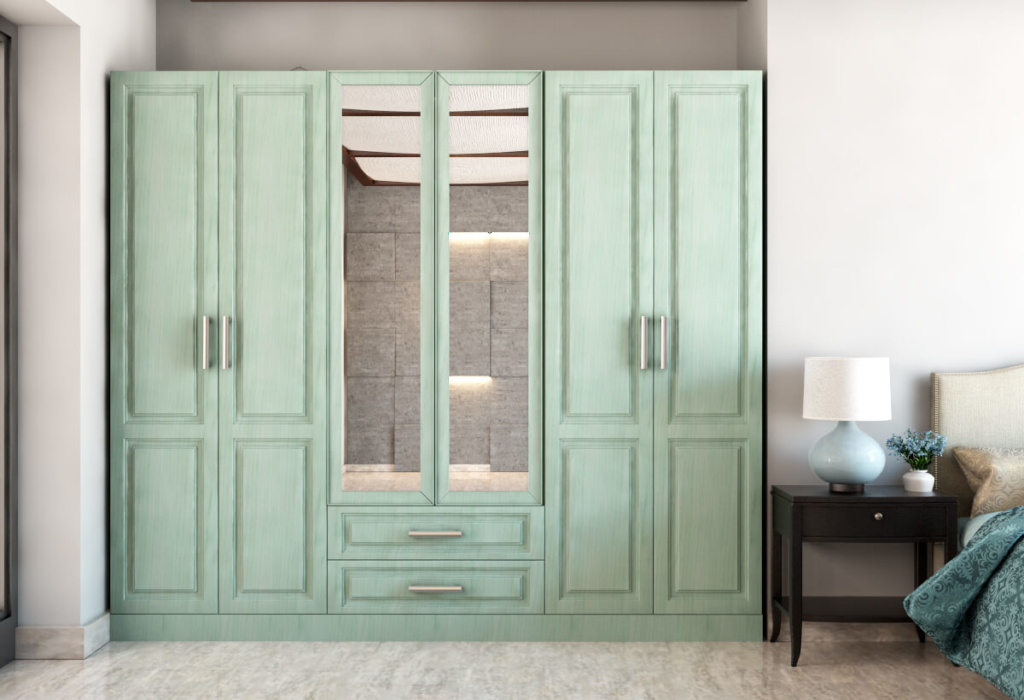All of us desire success and happiness in our lives. Color therapy states that the color of walls in the house influences your mood and mental well-being. Color combinations greatly influence our emotions. As a result, you should be very meticulous about choosing the color combination of your dream house, especially the bedroom, the most personal part of the house. The wall color should reflect not just the house’s personality, but also that of its residents. Choosing the right color combination can be one of the most challenging processes for beginners. There are many shades of wall paint colors, so it is challenging to decide which will fit your decor the best.
Often, people choose the colors of their walls based on Vastu. Moreover, you can also pick your color scheme based on your preferences, the use of the room, and its existing furniture. Find out the tips on what color of walls is the best for your home.
Factors to Consider While Choosing the Color of Walls for your Home
1. Choose Your Favorite Color for Walls
You always try to stick to your favorite colors. Preferably follow the trial and error method. First, visualize the combination of your favorite colors and also research such combinations. Use different paint samples in different parts of the wall, to pick the best color. This method never fails as you can see how different wall paints will look.
2. Select Color of Walls to Complement Furniture
Firstly you use and analyze the existing furniture to select an accent color for the walls of your home. Choose a subtle shade or complementary shade to emphasize your furniture. For instance, if you have a yellow lamp in your room, you can pick a bold color (preferably cherry red) to complement the lamp color. It will retain the elegance of the room.
3. Keep in Mind of Theme of the Room for Color of Wall
Constantly keep the overall color theme in mind. You can take the help of a color shade card while deciding the final color or combination of colors of walls for your room. You take care of harmony of colors for your walls for the entire house.
You need to first fix what you want from the specified room. Based on room function and mood-setting, decide a particular theme for the room and pick the color of the walls accordingly. If you want the room to be a high-energy area, use warm tones but if you plan to use the space for relaxing, consider cool colors such as blue and grey. Also, you can choose different levels of sheen according to the use of the room.
4. Color of Walls According to Natural Light
Consider natural light and its entry into the room while choosing the color of the wall. Keep in mind the amount of lighting your room will have before you choose a wall paint color. Natural lights will embrace the real color of walls. Incandescent lights bring up the warmer tones of the true color of walls, while fluorescent lights highlight sharp blue tones.
5. Consider Size of Room for the Color of Walls
Before selecting the color of a wall, consider the size of the room. Lighter shades will give the illusion that the room is bigger. When it comes to cozy rooms, however, you should pick a darker shade.
Different Types Of Colors Of Walls For Your Home
The color of the walls enhances, changes, and reveals the mood. Certain colors proved to increase the metabolism, increase blood pressure and eye strain. The color you choose is really about what you want the room to feel a certain way. Different shades in the same color can evoke different moods. We can summarize all the colors into warm, cool, and neutral.
-
Warm Color
Colors in the red spectrum/ wavelength are known as warm colors. It includes red, yellow and orange. These colors are radiant and very cozy. But they usually tend to make the room smaller than the actual size.
Red-
Red is an aggressive color, whereas pink color plays a role in reducing this emotion. Red is the color used to energize the body and the mind. It increases circulation and raises blood pressure. It also increases the speed of respiration. Red color proves to increase appetite. This color is a good choice for living rooms or dining rooms.
Yellow-
The yellow color of the walls makes many people cheerful, happy, and energetic. This color is great for the kitchen, dining room, bathrooms, living room, and even for small places such as corridors.
2. Cool Colors
Colors in the blue spectrum/wavelength are considered cool colors. It includes blue, purple and green. They make rooms feel colder and more spacious than usual.
Blue-
Blue acts for relaxation and improves our ability to focus and be productive. It is a popular choice for bedrooms, offices, study areas, and bathrooms. Dark blue produces a feeling of sadness, whereas light blue promotes a sense of calmness.
Purple-
Dark purple is a rich, dramatic and sophisticated color. It symbolizes luxury, as well as creativity. It also gives depth if we apply this color as a secondary color of walls.
Green-
Green is considered the most restful color. The green color is for balancing, healing, and relaxing. It is suitable for almost all rooms.
3. Neutral Colors
They are also called non-colors. It includes white, grey, brown, crayon, and black. It looks a little bit bland, but these are primary colors to add intriguing twists and character to the whole color theme.
Black-
Black is best used in small doses. Black denotes sophistication, power, modernity, and elegance.

